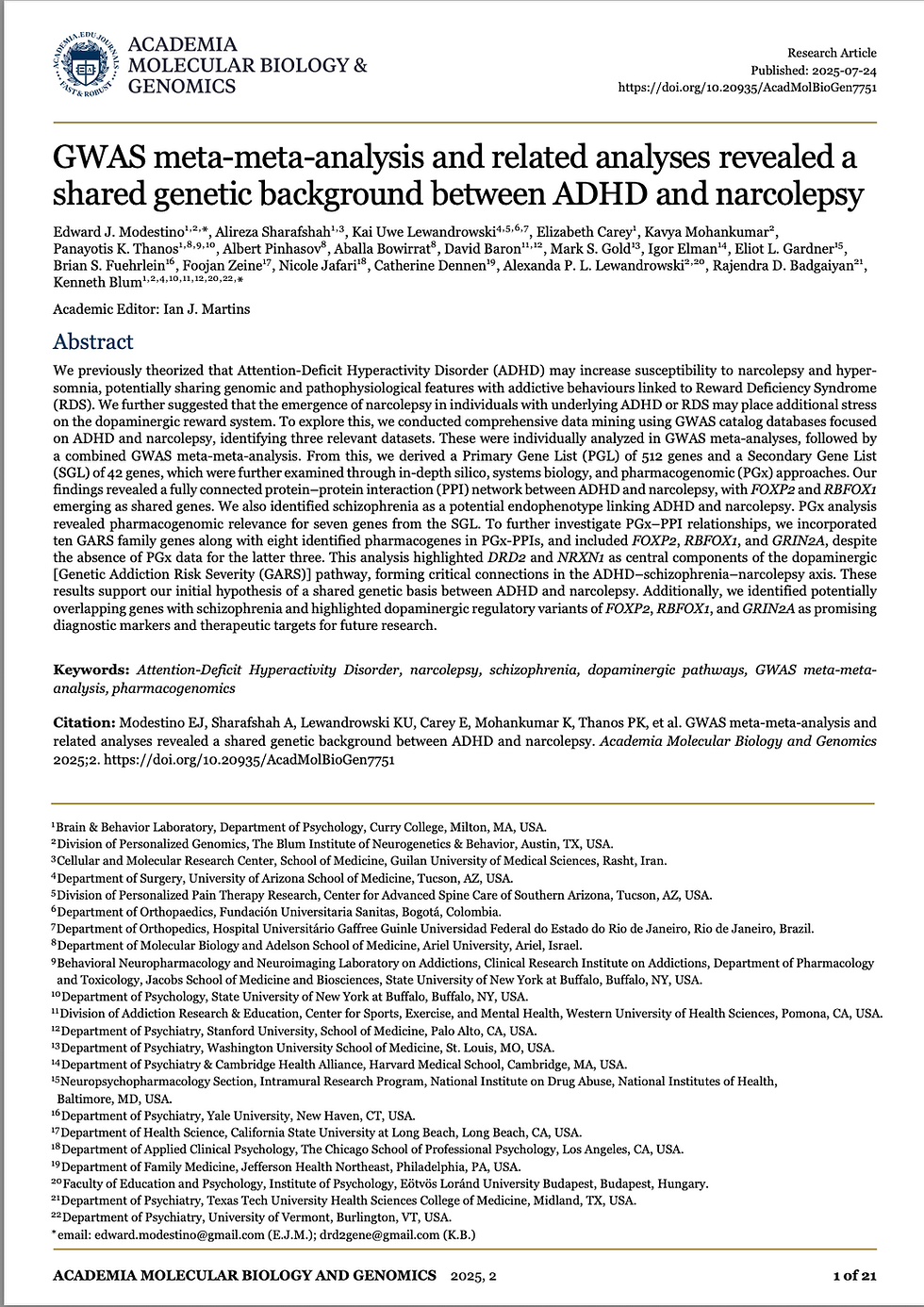Exploring the World of Aphantasia by Dr. Elizabeth Carey
- Edward Justin Modestino, Ph.D.

- Jun 23, 2024
- 3 min read
Updated: Jun 25, 2024

During vacation last week, I was sitting on the beach picturing the waves as tireless poets, their ink-stained quills dipped in the azure ink of the ocean. Many of you can close your eyes and conjure a vivid image of the sparkling turquoise waters and soft white sand. For a surprising number of people (estimates range from 2-5% of the population [Jackson et al., 2022]), this isn't possible. They lack the ability to visualize objects, scenes, or memories in their mind. These individuals experience a phenomenon known as Aphantasia, where they cannot visualize mental imagery [Zeman et al., 2015].
For those without aphantasia, the concept can be mind-blowing. How can you think about something without seeing it in your head? Aphants, however, describe their thoughts as more conceptual. They might recall the feeling of gritty sand between their toes or the smell of salty air, but there's no visual component.
This condition was first named by Professor Adam Zeman of the University of Exeter [Zeman et al., 2015] Many people with aphantasia often live their whole lives unaware that their experience is different. It's only when they encounter phrases like "close your eyes and picture..." or discussions about visualization techniques that they realize something might be amiss [Zeman et al., 2010].
This lack of awareness can lead to feelings of isolation, confusion, and depression. Aphants may wonder if they're missing out on some fundamental aspect of human experience. Aphantasia doesn't diminish your ability to think or be creative. Aphants often excel in other areas, relying on strong conceptual and spatial reasoning skills [Stokes et al., 2021]. They may also have a heightened sense of other senses, like touch, taste, and smell, which can contribute to a rich inner world in its own way.
There are some challenges associated with aphantasia. Aphants may struggle with tasks that rely on visualization, such as remembering directions or following written instructions. They might also find it difficult to connect with memories that are strongly tied to visual details. They may have trouble remembering faces and have limited dreams.
While there is currently no cure for aphantasia, there are strategies that can help people with aphantasia navigate a world built on visual thinking. For example, when recalling a memory, they can focus on non-visual details like sounds, smells, or emotions. Using visuals like maps and diagrams to compensate for the lack of internal visualization.
Research into aphantasia is still in its early stages, but it has the potential to shed light on how the human mind works and how we process information. Researchers are currently looking at brain circuitry and its link to autism. Understanding aphantasia could also lead to new insights into memory, imagination, and even consciousness. For example, would having aphantasia be beneficial to people suffering from trauma or remembering painful events?
Aphantasia may be an invisible condition, but it's a fascinating one. By understanding and celebrating the diversity of human thought, we can create a more inclusive world where everyone feels empowered to think and experience the world in their unique way. So, next time you close your eyes at the beach, remember that aphantasia reveals the diversity of human perception. Some see with their eyes wide shut, while others paint with words and sensations.
References
Jackson, J. C., Neri, P., & Davies, M. H. (2022). Aphantasia and visual perception: A systematic review and meta-analysis. Cortex, 150, 272-287. https://www.sciencedirect.com/science/article/pii/B978012821377300012X
Stokes, M., Summerfield, A. J., & Zeman, A. (2021). A blessing in disguise? Enhanced conceptual abilities in aphantasia. Cortex, 141, 234-243.
Zeman, A., Dewhurst, V., Meadowcroft, J., Milne, A. B., & Clifford, A. (2010). Seeing faces and places: A case study of visual agnosia with a family history of developmental prosopagnosia. Neuropsychologia, 48(1), 369-384.
Zeman, A., Vedhera, A., Meares, I., Hinton, C., & Greaves, H. (2015). Living with aphantasia. Perception, 44(9), 1144-1147.
For more information: Aphantasia Network




Comments